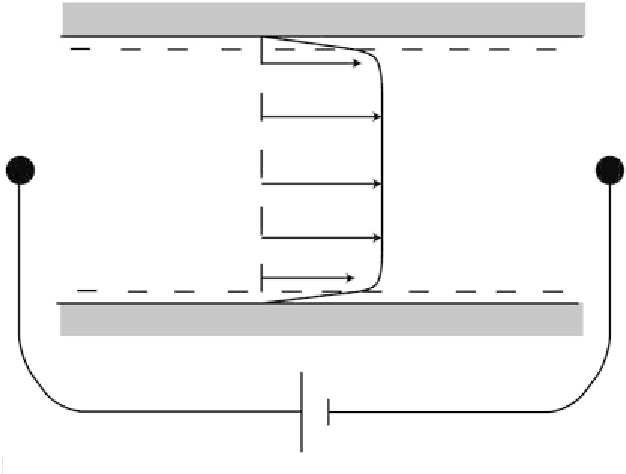Biomedical Engineering Reference
In-Depth Information
Integrating twice yields:
ε
E
1
(10.11)
v z
( )
=
(
ψ ζ
( )
z
-
)
η
On a plane surface,
y
decreases exponentially within the double layer and van-
ishes far from it. We can thus derive the electro-osmotic velocity V
eo
by writing
(10.11) far from the surface and we get:
V
= -
ε ζ η
E /
(10.12)
eo
1
Depending on the application, these electro-osmotic flows are either a nuisance by
interfering with the electrophoretic motilities or a powerful means to set liquids into
motion by a controlled plug-flow (Figure 10.3).
The above calculation is also the basis of electrophoresis. We have considered
the case of a fixed charged surface and have calculated the flows induced by an
electric field. Electrophoresis is the exact opposite situation: the solid moves under
the application of a dc electric field in an immobile fluid.
10.1.3 Electrophoresis of a Charged Particle
In electrophoresis as well, the electric field acts first on the counterions that are
then driven in the direction opposite to the particle increasing therefore its hydro-
dynamic friction. Dealing with small particles, the dissipation in the fluid is princi-
pally viscous.
Figure 10.3
Velocity profile of an electro-osmotic plug-flow in a negatively charged channel such
as fused silica. The thickness of the Debye layer (dotted lines) has been exaggerated.



